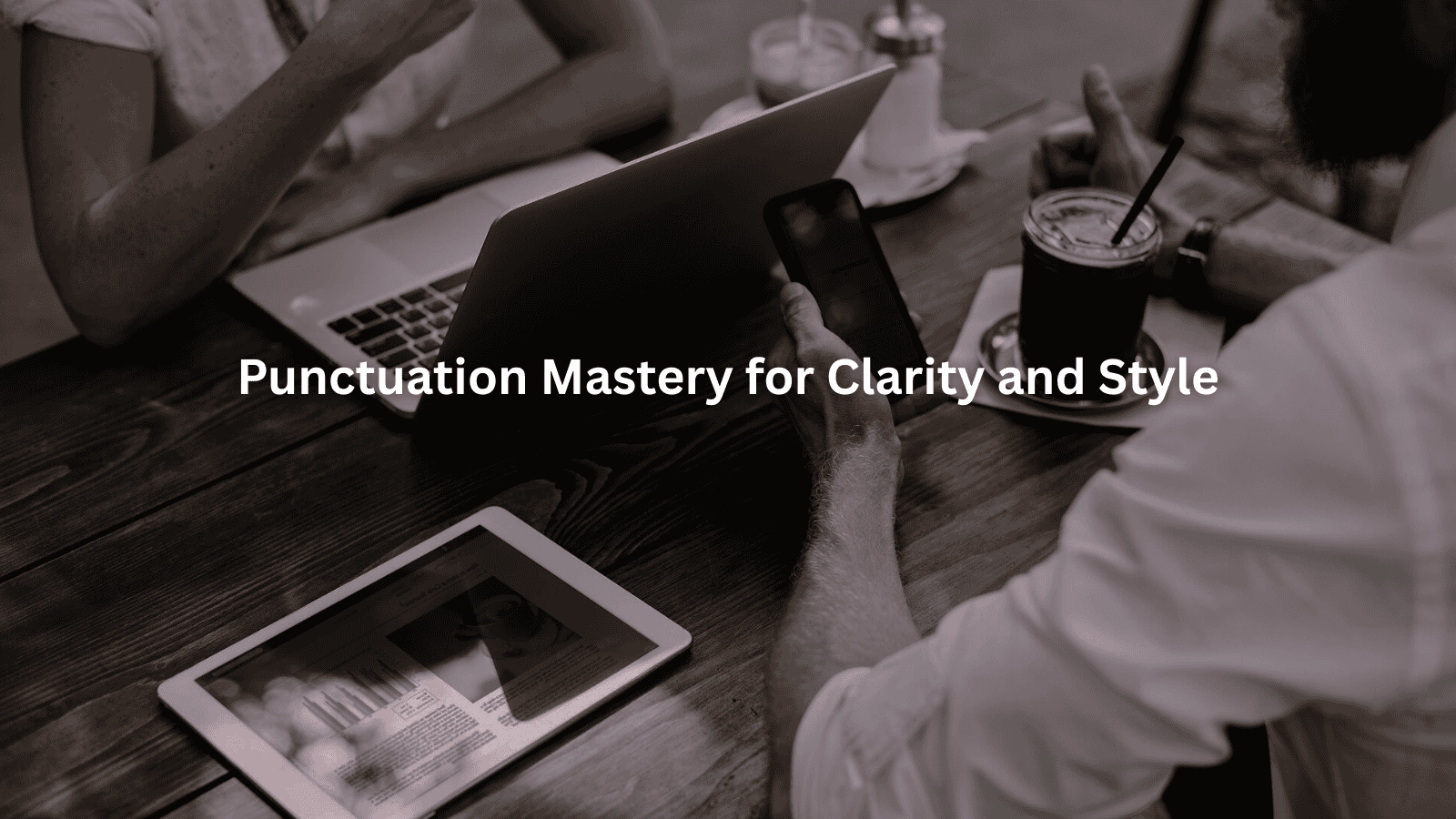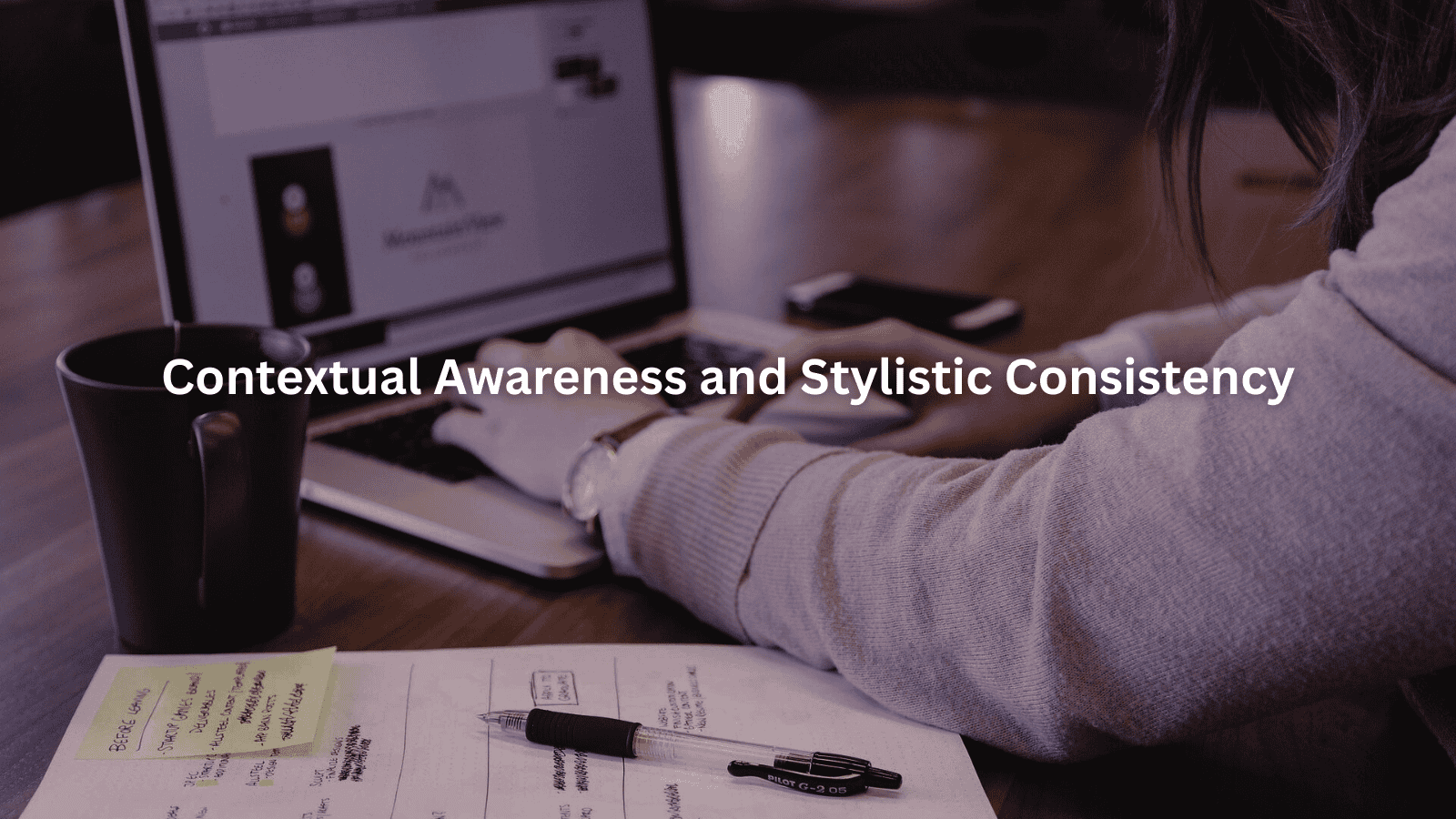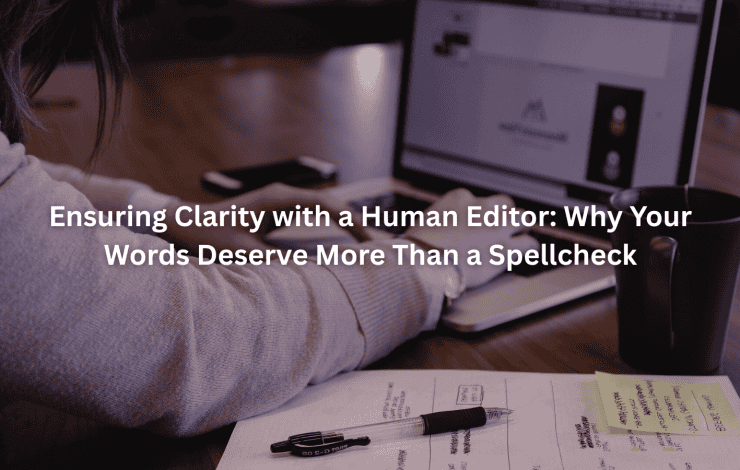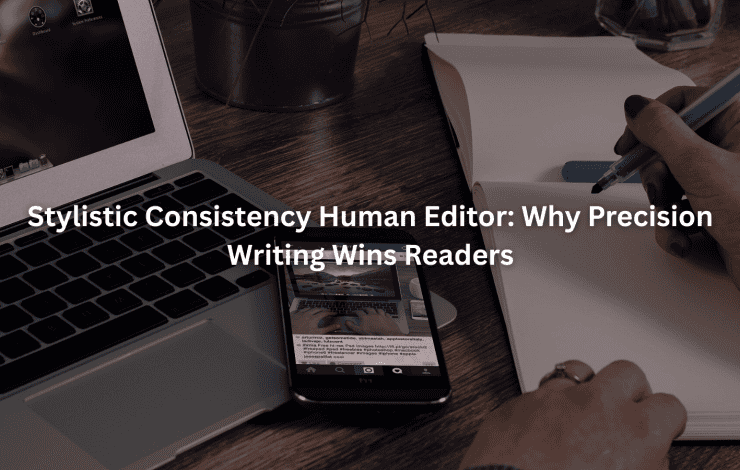Use varied sentence length to keep readers engaged. Check your verbs for tense shifts and subject-verb agreement. Avoid vague pronouns by making sure every “it” or “they” clearly refers to something specific. Manual Editing to catch missing commas and awkward phrasing before you publish.
Key Takeaways
- Combining human and AI editing covers both technical precision and subtle stylistic choices.
- Clarity comes from resolving advanced grammar issues like vague pronouns, modifier placement, and sentence structure.
- Consistent tone and error-free grammar make your writing more persuasive and credible.
Mastering Complex Sentence Structures
Most of us remember the first time a teacher circled a sentence and wrote “fragment” or “run-on” in the margin. I still catch myself pausing at a long sentence, asking if it really works, or if we’ve strung together too many ideas without enough glue. Our work at Jet Digital Pro leans on these instincts, but we also back them up with technical precision.
Compound and Complex Sentences
Writing is more than simple statements. We combine ideas using coordinating conjunctions like “and,” “but,” or “so,” and subordinating conjunctions such as “although,” “because,” or “while.” The trick is knowing when to join two independent clauses with a comma and “and,” or just a semicolon.
Example:
- She finished the report, and she emailed it to her boss. (compound)
- Although she was tired, she finished the report. (complex)
We look for ways to blend clauses without creating fused sentences, two complete thoughts crammed together with no punctuation.
Parallelism and Sentence Variety
Balanced elements help readers follow complex points. If you list three things, each should match in form:
- “Editing means finding errors, clarifying meaning, and improving flow.”
Not: “Editing means to find errors, clarifying meaning, and flow improvement.”
Mixing short and long sentences keeps the writing lively. We’ll often vary length intentionally, sometimes a three-word punch, sometimes a winding, clause-filled observation (like this one).
Avoiding Sentence Fragments and Run-on Sentences
Fragments sound unfinished. “While editing for clarity.” That’s not a sentence. We fix these by attaching them to a main clause.
Run-ons (fused sentences) happen when we connect two ideas with no punctuation or just a comma. We break them up or use semicolons.
- Wrong: “He reviewed the text he missed several errors.”
- Right: “He reviewed the text, but he missed several errors.”
We catch these errors by reading aloud and using checklists.
Advanced Verb Usage and Agreement

It’s easy to get tangled in verb endings, tense shifts, and agreement. In our experience, writers often slip into the wrong tense halfway through a paragraph, especially when describing past research or hypothetical situations.
Verb Tense Consistency and Shifts
We watch for places where the timeline jumps around without reason.
- “She edits the article and found errors.” (Wrong)
- “She edits the article and finds errors.” (Present)
- “She edited the article and found errors.” (Past)
We ask: Is the action happening now, or did it happen before? Narrative writing especially needs careful tense management, or readers lose track.
Modal Verbs and Subjunctive Mood
Modal verbs (could, should, would, might) let us show possibility, necessity, or ability.
- “Writers should proofread their work.”
The subjunctive mood creeps in for hypotheticals or wishes. - “If I were editing, I would check for missing commas.”
In formal writing, the difference matters. We spot errors in conditional sentences and fix awkward phrasings.
Subject-Verb and Pronoun-Antecedent Agreement
Errors here sound off:
- “The team are editing their document.” (Should be “is editing,” unless emphasizing individuals.)
Collective nouns and indefinite pronouns (“everyone,” “nobody”) often trip up writers. We double-check for agreement, especially in long, complex sentences.
Precision in Pronouns and Modifiers
We’ve all read sentences where “it” refers to nothing, or where a misplaced phrase creates unintentional comedy. Our job is to untangle these knots.
Avoiding Vague and Shifting Pronoun References
A vague pronoun reference confuses the reader.
- “When Susan talked to Maria, she said she was late.”
Who was late? We rewrite for clarity: - “When Susan talked to Maria, Maria said she was late.”
We trace each pronoun to its noun, fixing any shifts (“they” suddenly becomes “he”).
Correct Placement of Modifiers
Misplaced or dangling modifiers lead to odd meanings.
- “Running to the meeting, the coffee spilled.” (Was the coffee running?)
We fix these by putting the modifier close to what it’s describing: - “Running to the meeting, I spilled the coffee.”
Reading aloud and checking for logic in every sentence helps us catch these.
Enhancing Clarity with Relative and Adjective Clauses
We use restrictive clauses to specify (“The editor who found the error won an award”) and nonrestrictive clauses for extra information (“The editor, who loves commas, won an award”). Commas matter here.
Noun phrases and nominalization (turning verbs into nouns) add variety but must be used sparingly for clarity.
Punctuation Mastery for Clarity and Style

Grammar and style hinge on tiny marks. A missing comma or misplaced semicolon can change meaning, or make a sentence impossible to read.
Comma Usage in Compound and Complex Sentences
Serial commas prevent confusion, especially in lists:
- “We write blogs, build links, and optimize on-page SEO.”
We use commas after introductory elements and with coordinate adjectives:
- “Carefully edited, the article reads well.”
- “A clear, concise sentence is easier to understand.”
Comma splices (joining two sentences with just a comma) get fixed with periods, semicolons, or conjunctions.
Advanced Punctuation: Semicolons, Colons, and Hyphens
Semicolons connect related ideas:
- “The draft was clear; the flow needed work.”
Colons introduce lists or explanations: - “We checked for three things: tense, agreement, clarity.”
Hyphens join compound adjectives:
- “High-quality content” not “high quality content.”
We follow these rules closely. They make reading smoother.
Quotation Marks and Ellipsis in Dialogue and Reporting
Direct speech takes quotation marks. Reporting paraphrased speech needs no quotes but may shift tense or pronouns. Ellipsis (“…”) shows omitted words or trailing thoughts, but overuse can look sloppy. We cut where possible, keeping only what adds meaning or style.
Stylistic Editing and Readability Enhancement
Our edits go beyond grammar. We look for voice, tone, and flow, those qualities that make a piece feel finished and intentional.
Active vs. Passive Voice: When and How to Use
Active voice is clear and direct:
- “We edited the article.”
Passive voice hides the actor:
- “The article was edited.”
We use passive when the actor’s unknown or unimportant. But mostly, we favor active for engagement.
Emphasis Techniques: Inversion and Cleft Sentences
Sometimes, we move words around for emphasis:
- “Rarely have we seen such clarity.” (Inversion)
Cleft sentences split information for focus: - “It was the missing comma that caused confusion.”
We use these sparingly, but they’re powerful tools.
Cohesion and Coherence in Paragraphs
Transition words (“however,” “therefore,” “meanwhile”) guide readers through ideas.
- “We checked the facts. Meanwhile, the draft was reviewed for style.”
Logical order and clear connections help readers follow complex arguments. We adjust paragraph structure to keep everything flowing.
Editorial Strategies and Tools Integration
Are You a Digital Agency?
White Label SEO Content Services for Agencies
Scalable, customizable, and results-driven content solutions for your clients.
Every editor has a workflow. Ours combines traditional techniques with digital tools, balancing speed with human judgment. If you’re ready to find expert human editors for AI content, our team is here to help.
Manual Editing Workflow and Proofreading Techniques
We start by reading aloud. It’s the best way to catch awkward phrasing, missing words, or strange rhythms. Peer review brings fresh eyes, someone will spot what you missed.
Multiple drafts and checklists keep us honest. We review for error patterns: tense shifts, missing commas, vague pronouns. We also rely on our human AI editor for proofreading & grammar to double-check every draft with human precision.
Leveraging Digital Editing Tools with Human Insight
AI-powered suggestions get us closer to perfect, but we never trust them blindly.
We use Jet Digital Pro’s in-house AI to flag grammar issues, style mismatches, and awkward phrasing.
Then, we apply our own judgment, sometimes rewriting an entire paragraph for clarity or tone. AI is fast, but it can’t always read between the lines. That’s where our editors step in. [ 1 ]
Addressing Common Error Patterns and Tailoring Corrections
Every writer has habits. Some overuse “however,” others slip into passive voice, and many miss parallel structure in lists.
We create a feedback loop, our AI learns from accepted or rejected suggestions, and our editors adapt corrections to keep the author’s voice.
The goal isn’t perfection, but clarity and authenticity.
Contextual Awareness and Stylistic Consistency

No fix matters if the writing doesn’t fit its audience or purpose. [ 2 ] We always ask: Who will read this? What do they expect?
Adapting Grammar and Style to Audience and Purpose
Formal writing might need longer sentences, precise vocabulary, and strict grammar. Informal blogs can relax rules, using contractions and idioms.
We check for cultural references and context, what works in one setting might offend or confuse in another.
Maintaining Tone Consistency Across Texts
A company blog should sound consistent from one post to the next. We flag tone shifts and fix them.
- Strategies:
- Keep verb tense steady
- Use parallel structure
- Remove redundancy
We trim wordiness, tighten sentences, and ensure every edit serves the message.
Practical Advice for Stronger Advanced Grammar
Need a Strategic SEO Content Partner?
Let’s craft SEO content that ranks, converts, and grows your brand.
Talk to UsWe’ve learned that even the best tools need a human touch. Editing isn’t just about rules. It’s about making sure every idea lands clearly. Our advice:
- Read your work aloud, awkward spots jump out.
- Use checklists for tense, agreement, and punctuation.
- Trust AI tools for the basics, but always review with human eyes.
- Focus on your audience’s needs and expectations.
- Don’t be afraid to rewrite for clarity or flow.
At Jet Digital Pro, our editors combine experience, technical knowledge, and a little stubbornness about clarity. We believe every writer can improve with patience and practice, and the right backup.
If you need high-quality, Google-resilient content that sounds human and sharp, we’re ready to help, one comma at a time. For full support, you can always explore the best human AI editing services we offer to keep your writing sharp and credible.
FAQ
How do human AI editors handle shifts in tone or style within the same piece?
When we notice a sudden change in tone, maybe a section sounds too formal while the rest is casual, we pause and review the context. Our editors look for reasons behind the shift. Sometimes it’s intentional, but more often, it’s not. We adjust word choice, sentence length, and punctuation so the whole piece reads smoothly and feels like it comes from one consistent voice.
Can a human AI editor spot subtle grammar mistakes that digital tools might miss?
Yes, we often catch mistakes that machines miss. For example, a digital tool might not notice when a pronoun doesn’t match its noun, or when a modifier is in the wrong place and changes the meaning. We read for logic and clarity, using our understanding of context to fix errors that don’t always show up in a grammar check.
In what ways does context influence the grammar corrections made by human AI editors?
Context shapes everything we do. If a sentence is technically correct but sounds awkward for the intended audience, we’ll revise it. We consider the purpose of the text, the background of its readers, and the subject matter. Our edits change depending on whether the writing is an academic paper, a business email, or a blog post for the general public.
How do human AI editors balance strict grammar rules with preserving the author’s personal style?
We believe grammar serves meaning, not the other way around. If an author has a unique voice, maybe short, punchy sentences or playful phrasing, we try to keep that intact. We correct errors that could confuse readers but avoid making changes just for the sake of sounding “textbook.” Our goal is always clarity without flattening individuality.
What are the most overlooked advanced grammar issues that human AI editors frequently fix?
Some issues come up again and again. We often fix vague pronoun references, mismatched verb tenses, and misplaced modifiers. Comma splices and run-on sentences are easy to miss, especially in long drafts. Another common problem is inconsistent tone or style, which can happen when a writer edits in several sittings. We keep an eye out for all of these, every time.
Conclusion
In our experience, mastering advanced grammar means blending clear rules with context and style. At Jet Digital Pro, we combine AI efficiency with human insight to catch tricky errors, sharpen phrasing, and adapt writing for any audience. Good editing isn’t just technical, it makes sure every sentence supports your goals. When you want content that’s clear, confident, and authentic, we’re here for you. Contact us to see how we keep your SEO content polished and Google-ready.
References
- https://www.allbusiness.com/will-ai-replace-writers,
- https://www.bloodinthemachine.com/p/the-ai-jobs-crisis-is-here-now
Related Articles
- https://jetdigitalpro.com/best-human-ai-editing-services/
- https://jetdigitalpro.com/find-expert-humans-for-ai-content/
- https://jetdigitalpro.com/human-ai-editor-for-proofreading-grammar/
P.S – Whenever you’re ready,
we’re here to help elevate your SEO content.
Partner with us for strategic, scalable content that drives real organic growth.
Contact Us Now




